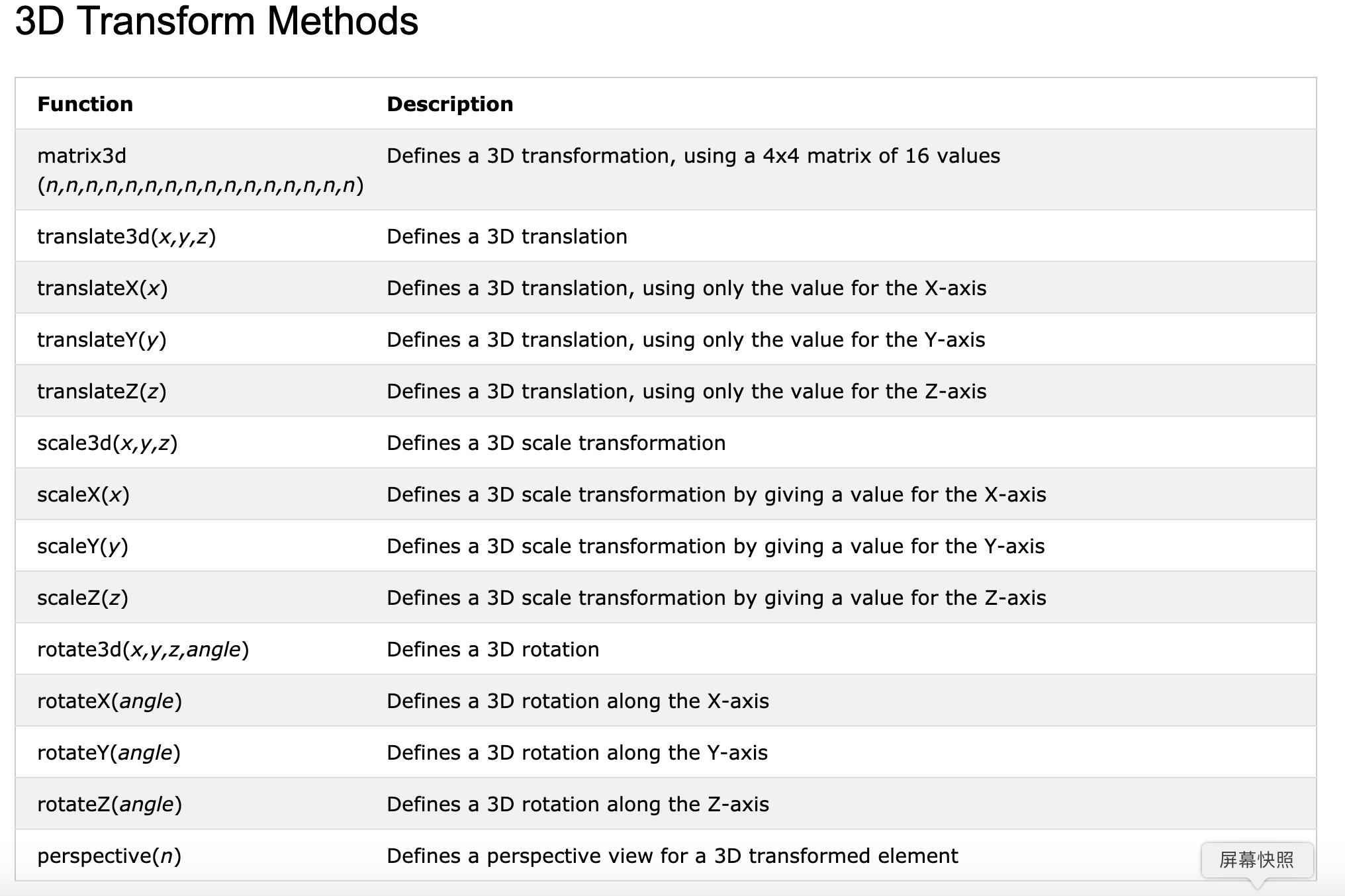CSS 2D Transforms
CSS Transforms
CSS transforms allow you to translate, rotate, scale, and skew elements.
A transformation is an effect that lets an element change shape, size and position.
CSS supports 2D and 3D transformations.
translate()rotate()scale()skewX()skewY()matrix()
The translate() Method
The translate() method moves an element from its current position (according to the parameters given for the X-axis and the Y-axis).
The following example moves the <div> element 50 pixels to the right, and 100 pixels down from its current position:
transform: translate(50px, 100px);
The rotate() Method
The rotate() method rotates an element clockwise or counter-clockwise according to a given degree.
The following example rotates the <div> element clockwise with 20 degrees:
transform: rotate(20deg);
The scale() Method
The scale() method increases or decreases the size of an element (according to the parameters given for the width and height).
The following example increases the <div> element to be two times of its original width, and three times of its original height:
transform: scale(1.5, 2.5);
transform: scale(0.5, 0.5);
The skewX() skewY() skew()Method(倾斜)
The skewX() method skews an element along the X-axis by the given angle.
The following example skews the <div> element 20 degrees along the X-axis:
transform: skewX(20deg);
transform: skewY(20deg);
transform: skew(20deg,30deg);
The matrix() Method
he matrix() method combines all the 2D transform methods into one.
The matrix() method take six parameters, containing mathematic functions, which allows you to rotate, scale, move (translate), and skew elements.
The parameters are as follow: matrix(scaleX(),skewY(),skewX(),scaleY(),translateX(),translateY())
transform: matrix(1, -0.3, 0, 1, 0, 0);
